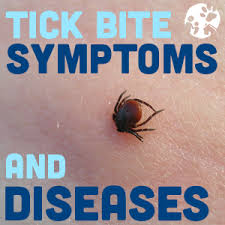
 Living in the South can be great. The Southern landscape includes rivers, lakes, mountains, beaches – and ticks. Ticks are second only to mosquitoes in terms of public health importance. While most tick bites are completely harmless, some can be dangerous, even deadly.
Living in the South can be great. The Southern landscape includes rivers, lakes, mountains, beaches – and ticks. Ticks are second only to mosquitoes in terms of public health importance. While most tick bites are completely harmless, some can be dangerous, even deadly.
Identifying a tick:
Ticks are blood suckers. They do not fly, jump, or blow around in the wind. Ticks are part of the arachnid family, and have eight legs. They range in color from brown, reddish brown, and black, and come in a variety of sizes. The largest ticks are usually no bigger than a pencil eraser, but can get as big as a marble as they take on more blood. There are hundreds of tick species, but only a few that interact with us and us cause harm.
Ticks prefer warm, moist areas. Because of this ticks are most often found in the armpits, groin, and hair. When a tick bites you it can attach itself to your body, and stay there for several days or weeks feeding. It’s very typical to know you’ve been bitten because you find the tick still attached to you. In some cases an engorged tick can detach itself and fall off.
Know the signs: As previously mentioned, not all tick bites are harmful. If you are allergic to the bite you may experience the following: pain, swelling, rash, burning sensation, blisters, and in some cases difficulty breathing.
Ticks become harmful when they transported a disease.
A few common tick-borne diseases in the US include:
Lyme disease – symptoms are similar to the flu, and can include a headache, stiff neck, pain in the joints and muscles, feelings of weakness, and low-grade fever. While Lyme disease is rarely fatal, it can take a toll on your heart, joints, and nerves.
Rocky Mountain Spotted Fever – symptoms almost always include a fever and rash, but can also include weakness, severe headache, chills, and body aches. People have reported gastrointestinal symptoms such as abdominal pain and diarrhea in some cases. According to the CDC, Rocky Mountain Spotted Fever is the most frequently reported of the tick-borne diseases, and yet still, possibly the most under reported.
Tularemia – also known as rabbit fever or deer fly fever can be contracted in a variety of ways, but ticks account for 50% of all cases. Symptoms include a high initial fever that can remit and return. A skin ulcer can appear at the site where the tick bite occurred which may include swelling of lymph glands in the armpit or groin.
Removing the tick: The most important thing to do when a tick is discovered is to remove it. A tick can be removed with a tick removing tool or device (there are many on the market), or a set of tweezers. If you use a pair of tweezers to remove the tick you need to apply the following steps as outlined by the CDC:
- Use fine-tipped tweezers to grasp the tick as close to the skin’s surface as possible.
- Pull upward with steady, even pressure. Don’t twist or jerk the tick; this can cause the mouth-parts to break off and remain in the skin. If this happens, remove the mouth-parts with tweezers. If you are unable to remove the mouth easily with clean tweezers, leave it alone and let the skin heal.
- After removing the tick, thoroughly clean the bite area and your hands with rubbing alcohol, an iodine scrub, or soap and water.
- Dispose of a live tick by submersing it in alcohol, placing it in a sealed bag/container, wrapping it tightly in tape, or flushing it down the toilet. Never crush a tick with your fingers.
If you do not feel comfortable removing the tick yourself, please seek medical assistance. Monitor yourself for days and weeks following the removal, and seek medical assistance if any unusual symptoms or any symptoms outlined above begin to develop.
We’re here to help you when you need it. Visit one of our four Mississippi urgent care locations – Amory, Southaven, Oxford, or Starkville – we want to help you as fast as we can.
